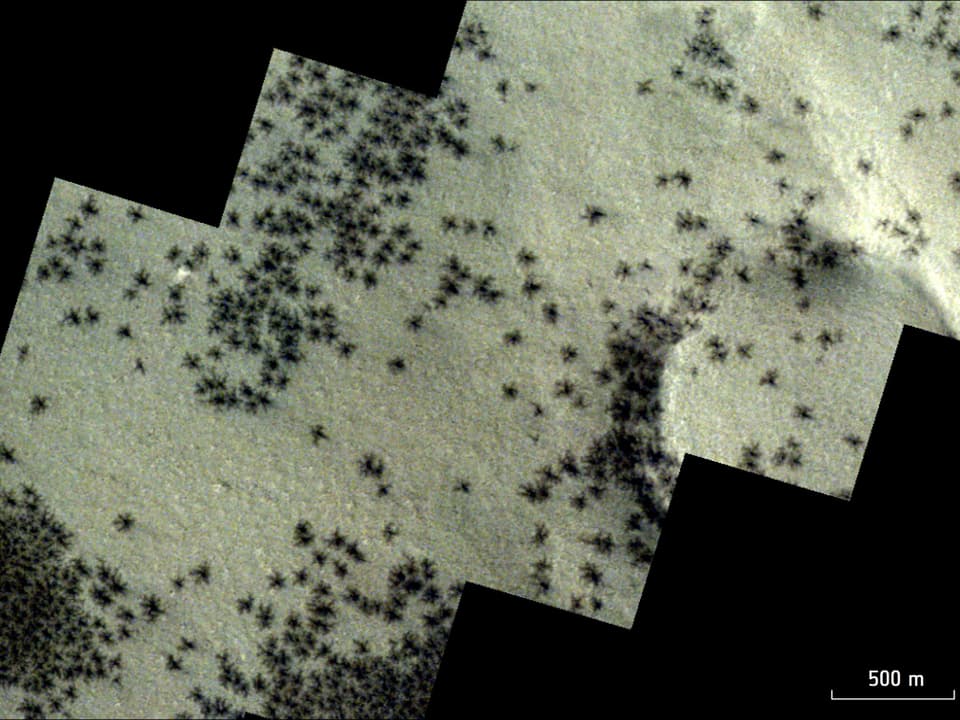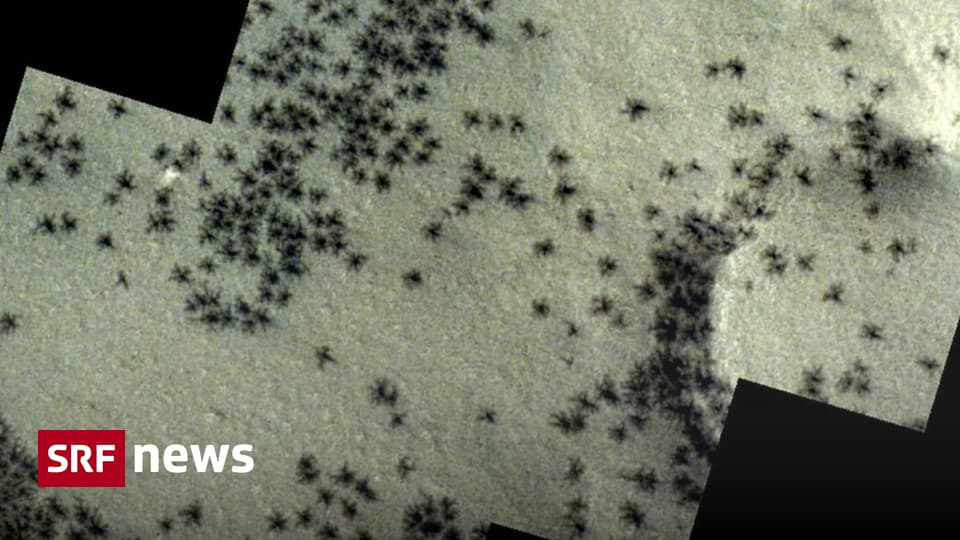The European Space Agency (ESA) has reported “signs of spiders on Mars.” This is what lies behind this natural phenomenon.
This is what it's about: “Signs of spiders on Mars”: This happened recently As reported by the European Space Agency (ESA). The message should be taken with a wink, because the European Space Agency explained that the small, dark structures in the images were a natural phenomenon at the planet's south pole. This has nothing to do with live young animals.
Here's what lies behind it: This phenomenon involves cracks on the surface of Mars. There is a lot of carbon dioxide on Mars, which freezes in the winter to form a transparent layer of ice. When the sun shines on this ice surface in the spring, the carbon dioxide at the bottom of this ice sheet melts and turns into a gas. This is loaded with dark dust and shoots up through ice cracks in the form of tall fountains or geysers before falling back and settling on the surface. This process creates the distinctive “spider-shaped” patterns.

legend:
This phenomenon includes cracks on the surface of Mars.
European Space Agency
The most important findings of the European Space Agency's mission to Mars: The Mars Express rover has been traveling on Mars for more than 20 years. Clay and various types of minerals were the most important discoveries on the so-called red planet so far, says Nicholas Thomas, professor of experimental physics at the University of Bern. He added: “Based on these discoveries, we know that water was present on Mars in the past, which was converted into clay through chemical reactions with stones.”
This is why Mars is so interesting for research: Mars is the planet closest to Earth. Thomas is convinced: “At some point we will visit Mars.” The European Space Agency has developed cameras that can image the surface of Mars. “We use our cameras to find landing sites and water traces.” The history of Mars should also be researched: “Why did the water disappear? Where did it go? How did it develop?” We also want to know more about processes that do not exist on Earth.
This is the current state of research regarding life on Mars: The current European Space Agency mission is also searching for life on Mars. However, Thomas is skeptical: “There is a lot of sulfur on Mars and the conditions are not ideal for bacteria.” However, more research is still being conducted. In 2028, the European Space Agency wants to carry out another space mission to explore the surface of Mars, the ExoMars spacecraft mission. The goal of this mission is primarily to search beneath the surface of Mars for organic materials from the planet's early history.

“Tv expert. Hardcore creator. Extreme music fan. Lifelong twitter geek. Certified travel enthusiast. Baconaholic. Pop culture nerd. Reader. Freelance student.”






More Stories
▷ Gemmingen fell to second-to-last place
According to the study, mysterious blocks in the Earth's interior caused plate tectonics
Pizza is only in third place: Germans prefer this frozen product